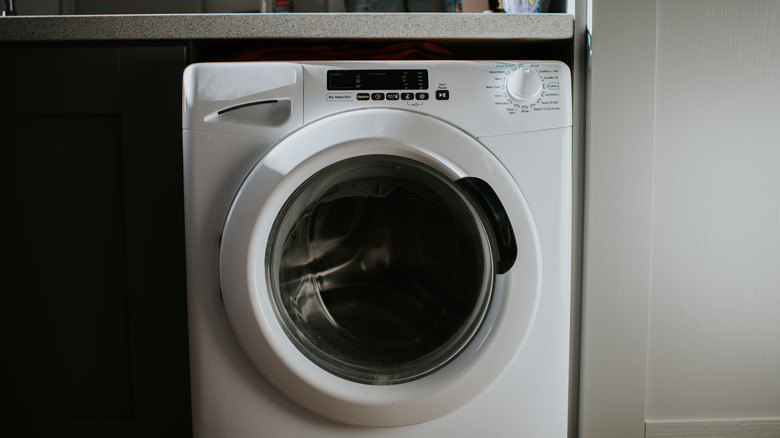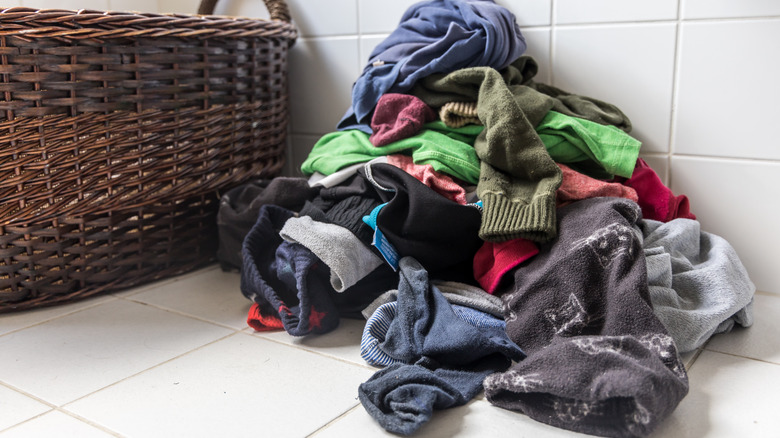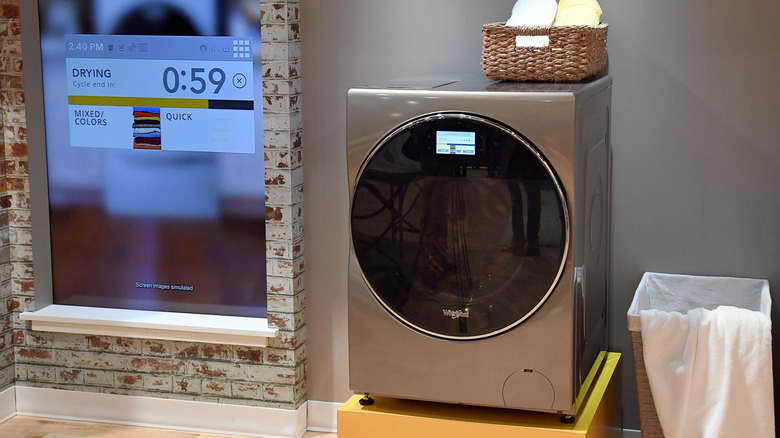Are Washer Dryer Combos Worth It? The Downsides Are Worse Than You Know
In theory, there's a lot to love about all-in-one washer and dryer combo units, starting with the fact that there's just plain less of it than there is of separate washer and dryer units. Sadly, there are trade-offs, and it's fair to say the trades you have to make for a combo unit can be pretty off-putting.
Let's start with the obvious. If you get a combo unit, one of the things you'll put off is the next load of laundry, since you can't start it until the current load dries. And that might be quite a while, given the dry times most of these units can achieve. Add to that the fact that you can't fit as much actual laundry into a combo machine, and you might start thinking about buying a second one ... except that they might be pretty expensive to boot. There is, indeed, a lot to consider when choosing a washer and dryer, and that applies just as much to combo units.
Before we have a look at the upsides and way-down-low sides of combination washer/dryers, note that we're discussing both models with ventless condenser dryers and those with ventless heat pump dryers. We'll let you know when there's an important difference between the two — and there are some important differences. Condenser dryers use simple heat exchangers that are about as efficient as a standard vented dryer, while heat pump dryers employ an evaporator coil and refrigerant cycles to preserve and reuse the heat they create, thereby using 28 percent less energy along the way.
The pros and cons of all-in-one washer dryer combo units
If you've even considered a combo unit, you probably know some of their benefits already. The most concrete advantages are that they take up less space than traditional washers and dryers, and since they don't need to vent during dry cycles, they can be installed anywhere with power, water, and drain lines. There's also obviously no need to spend time moving laundry from the washer to the dryer since combo machines use the same drum, and you don't need to be on standby (or at the beck and call of some smart home routine) to cycle through the laundry when one of the machines finishes its work. They just carry on happily with the drying work as soon as the washing work is done.
If this last sounds like a mixed blessing, it is. Households with a lot of kids or work-related laundry are likely to find the limitations of combo laundry machines problematic. Unlike separate machines, they can only handle a single load at a time, and — here's the big catch — they don't handle as much. With combo capacities running from 1 to 5.5 cubic feet of laundry, you might soon miss your dryer (they average 5-5.8 cu. ft.) and especially your washer (averaging 7-7.4 cu. ft.), so be sure to know what washer and dryer sizes you require before going with a combo. Also, drying times are remarkably long, taking from three to 10 hours for a full load, depending on the model.
Space and cost considerations for combo washer dryers
Word on the street is still that combo washer and dryer units are more expensive than buying separate units, but a quick look at what is offered and in stock at the local Home Depot and Lowe's shows the difference might not be that dramatic. One combo machine in stock at Lowes and the three in stock at Home Depot were all within $1 of $1999, which doesn't seem outrageous if you've shopped for a matched washer and dryer pair recently. Because of some peculiarities of the Home Depot search engine, we looked at the washer and dryer sets offered and in stock at our local Lowes location and found 13 sets with an average price of $1525.92. If you discard sets with top-loading washers, that average becomes $1,803.83, with half of the sets costing more than the average combo laundry machine.
One point of interest for those interested in the space savings offered by combo units: Three of the Maytag sets offered by Lowes were marked as stackable, and presumably wouldn't take up any more floor space than an all-in-one unit since they have about the same dimensions as the average for washers and dryers. Average cost: $1713 per set. Home Depot lists 30 washers and dryers in stock locally as stackable, with all the dryers having a capacity over 7.3 cu. ft, which is well above the capacity of the largest combo. A handful of the washers had smaller capacities, and were generally either portable or marked as compact models. So if space is your primary consideration, you may want to keep this in mind.


